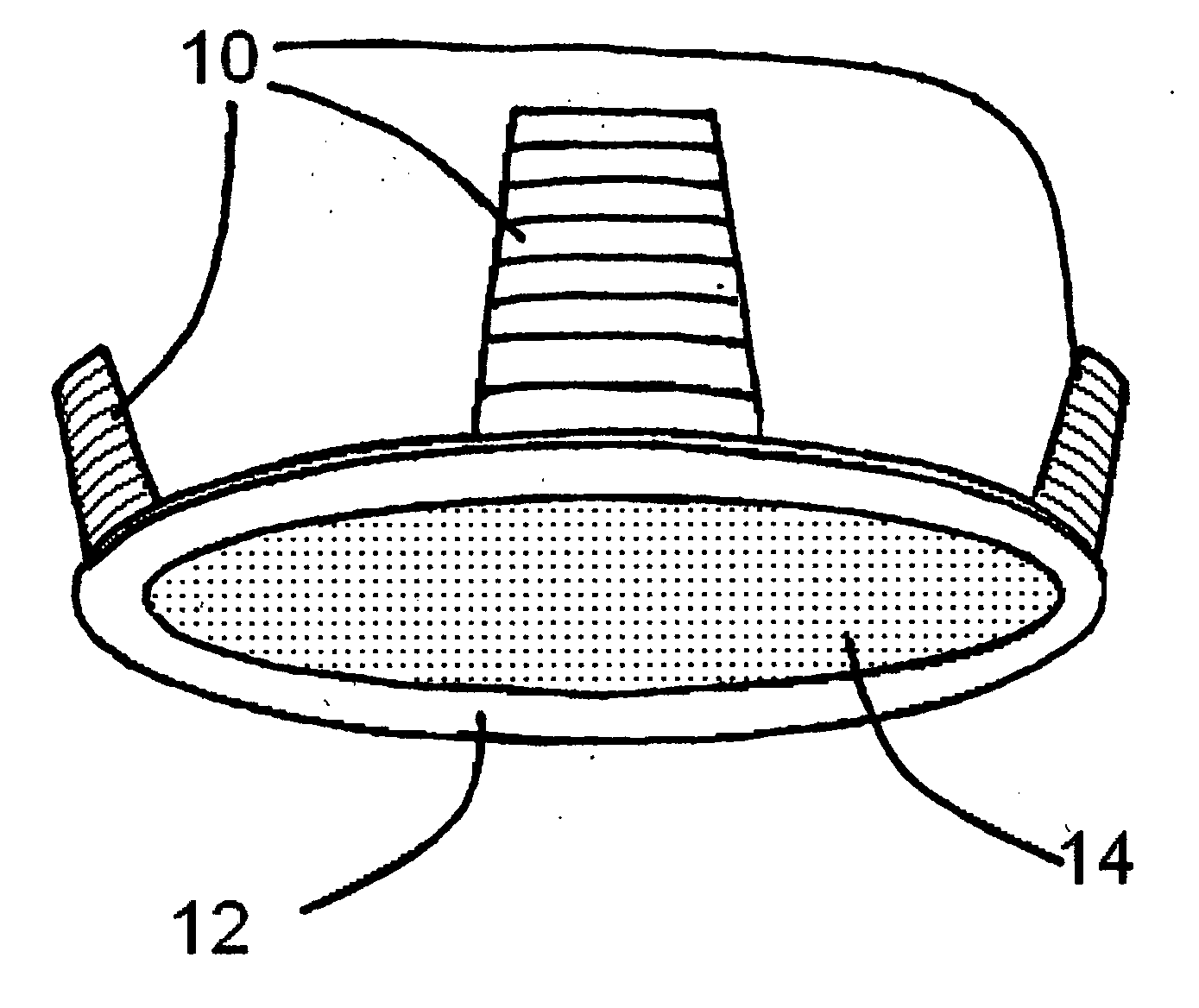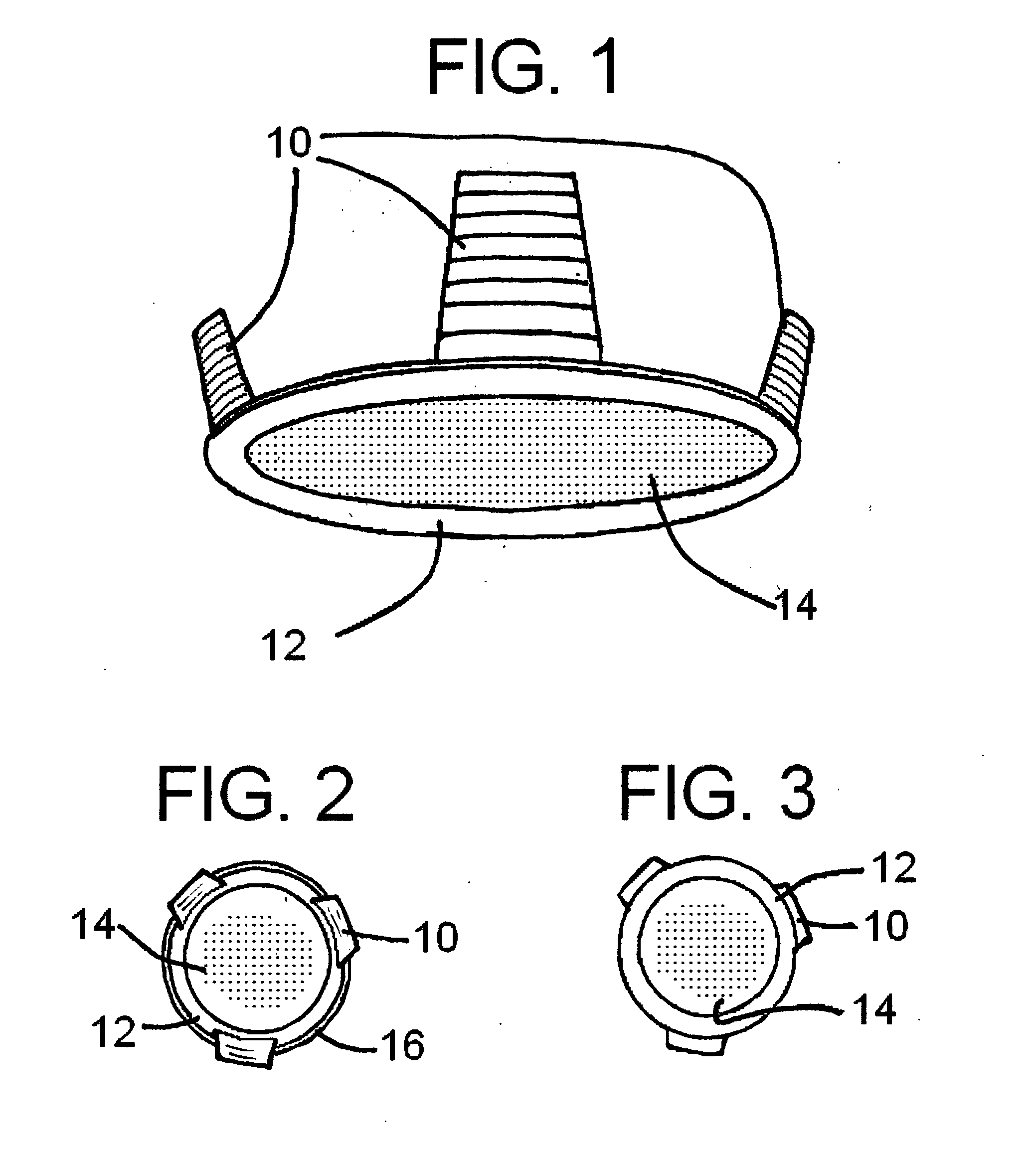Sealed cover for recessed lighting fixture
- Summary
- Abstract
- Description
- Claims
- Application Information
AI Technical Summary
Benefits of technology
Problems solved by technology
Method used
Image
Examples
Embodiment Construction
[0038] The present invention allows for the quick and simple installation of an airtight cover over a RLF without special skills, tools, dexterity or physical strength. In its most basic form, the present invention consists of an insert that is engaged with the RLF at three points, namely (i) the housing of the present invention frictionally engaged with the inner surface of the RLF baffle, (ii) the outer trim of the present invention physically engaged with the outer trim of the RLF, and (iii) the airtight seal ring adhesively engaged with the trim ring of the present invention, and physically engaged with the outer trim of the existing RLF. As contained herein, the present invention is described with reference to a ceiling-mounted RLF, though it is to be understood that use with other fixtures having similarly defined openings is expressly contemplated.
[0039]FIG. 1 is a perspective view from the underside of the present invention depicting the retaining clips of the housing 10, t...
PUM
 Login to View More
Login to View More Abstract
Description
Claims
Application Information
 Login to View More
Login to View More - R&D
- Intellectual Property
- Life Sciences
- Materials
- Tech Scout
- Unparalleled Data Quality
- Higher Quality Content
- 60% Fewer Hallucinations
Browse by: Latest US Patents, China's latest patents, Technical Efficacy Thesaurus, Application Domain, Technology Topic, Popular Technical Reports.
© 2025 PatSnap. All rights reserved.Legal|Privacy policy|Modern Slavery Act Transparency Statement|Sitemap|About US| Contact US: help@patsnap.com



